Introduction to historical sites near the Espinas Hotel
In this article we would like to mention top 11 historical sites near Espinas Persian Gulf Hotel Tehran.
Dear tourists who are planning to travel to Iran from all over the world are better book a stylish and luxurious place by booking Espinas Persian Gulf Hotel in Tehran.
All tourists enjoy seeing historical sites that are relevant to the culture of each country. But they may find it difficult to find them and know how to access them.
In this article we are going to introduce you to 11 beautiful historical sites that are in the shortest distance to the Espinas Keshavarz Boulevard Hotel and are among the tourist attractions of Tehran.

Our criterion for choosing these places after being close to Tehran Espinas Hotel has been their attractiveness.
These sights are among the famous tourist sites of Tehran. This article describes the different parts of these locations and their use in the past.
The exact address of these points and their distance to the Espinas Hotel is stated in this guide. It also states the time it takes for non-traffic hours to reach these locations.
Join HotelOneClick to get acquainted with these places and get interesting information about them.
1. Ali Akbar Sanati Museum: to the memory of the Iranian artist
One of the museums in Tehran is the Ali Akbar Sanati Museum, which is set up to display the artist's works. During his lifetime.
Ali Akbar Sanati created nearly 6,000 paintings and more than thousands of plaster, stone and bronze statues in which Iranian scientific and literary and various social figures can be found.
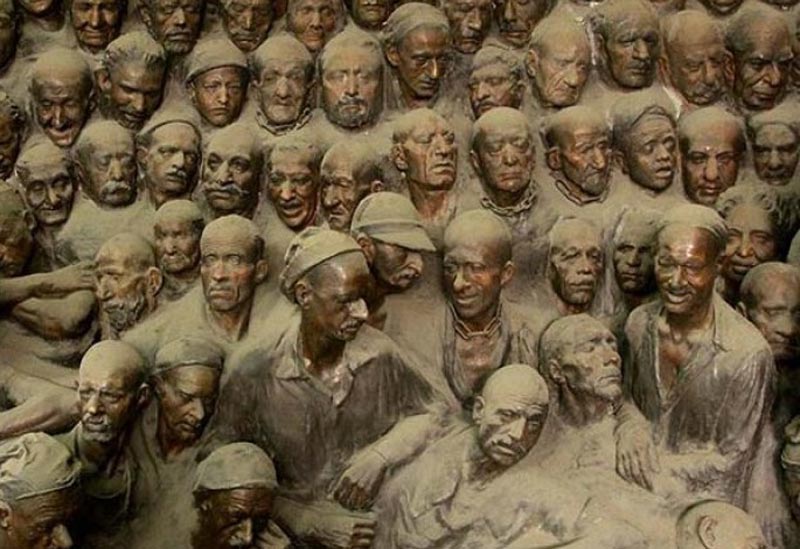
Some of these works are kept in a Qajar-era building and attract enthusiasts.
The museum is about 350 meters from Imam Khomeini's metro station and can easily be reached.
The theme of museum works
The artifacts in the museum are generally in three fields:
- Art gallery
- Statue
- Painting
Visiting Hours: Saturday to Wednesday 09:00 AM to 13:30 PM - Thursdays 09:00 AM to 12:00 PM
Suggested visiting time: 1 hour
More information about Ali Akbar Sanati Museum
Address: Imam Khomeini Square
Distance from Espinas Persian Gulf Hotel to Ali Akbar Industrial Museum: 5.1 km. 12 minutes by car during non-traffic hours
2. Sepah Bank Museum: one of the valuable treasures of the Middle East
Bank Sepah Museum is one of the richest coin museums in the Middle East.
The museum was founded in 1963 by Agh Avali the manager of Sepah Bank at that time to take a step towards preserving the country's cultural heritage.
In this museum you can see an exquisite collection of different periods of Iranian history from the distant past to the present, eras such as Achaemenid, Parthian, Sassanian, Samanian, and Seljuk.
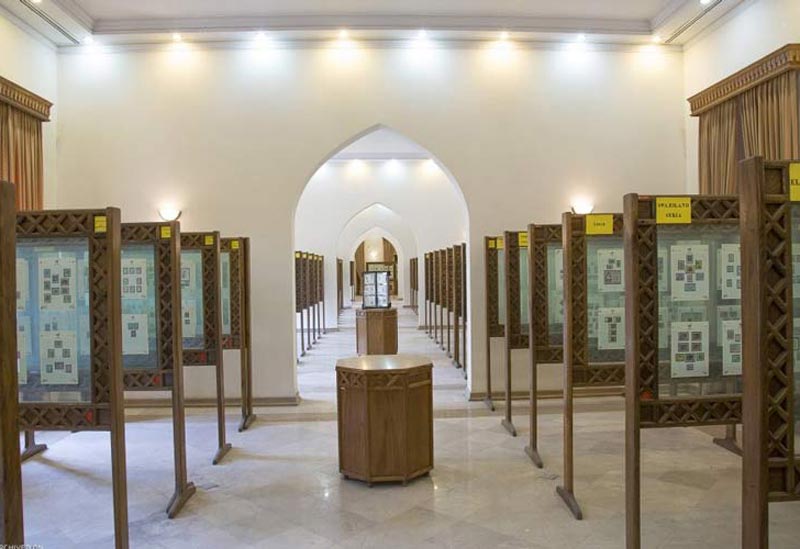
Many rare and prominent coins can be found in the museum, making Sepah Bank museum one of the most comprehensive museum.
The coins in the museum not only represent economic, social and cultural events but also show artistic elegance, display of clothing, royal ornaments and religious ceremonies.
The museum is 350 meters from Imam Khomeini Metro Station.
Theme of the works
The artifacts held at this museum are coins that belong to different times.
Visiting Hours: Everyday 9:00 am – 3:00 pm Thursdays 9:00 am – 1:00 pm
Suggested visiting time: 1 to 2 hours
More information about the Sepah Bank Museum
Address: Imam Khomeini Street
Distance from Espinas Persian Gulf Hotel to Bank Sepah Museum: 5.7 km. 11 minutes by car in non-traffic hours
3. Post and Communications Museum: Seeing the post and telegraph history
The Post and Telegraph Museum or Communication Museum is a lesser known museum in Tehran province.
The museum's attractions include the oldest writing stuff and tools for sending postal packages, prime or primary telephones, Morse telegrams, stamps, and other communications and telecommunications tools from carrier pigeon to satellites.
The museum was built for the post and customs office and can be considered one of the magnificent monuments of the Reza Khan era.
The museum is 450 meters from Imam Khomeini Metro Station.
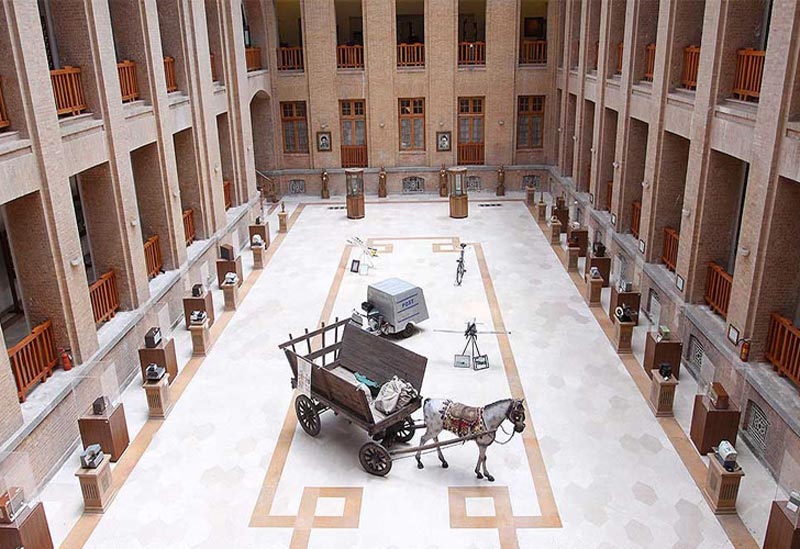
The theme of the Communications Museum's work
Most of the museum's works are in several fields that you can see below:
- Post date
- Telegraph
- Telephone
- Other communication tools
Visiting time: 8:00 am to 4:00 pm
Suggested visiting time: 1 to 2 hours
More information about the Communication Museum
Address: Imam Khomeini Street
Distance from Espinas Gulf Hotel to Communication Museum: 5.5 km. 11 minutes by car in non-traffic hours
4. Malek National Library and Museum
Malek National Library and Museum is one of Iran's richest libraries and is also an attraction.
This library holds about 19,000 rare and exquisite manuscripts and is one of the six great treasures of Iranian manuscripts.
This library is a valuable asset to our country and many enthusiasts are using it.
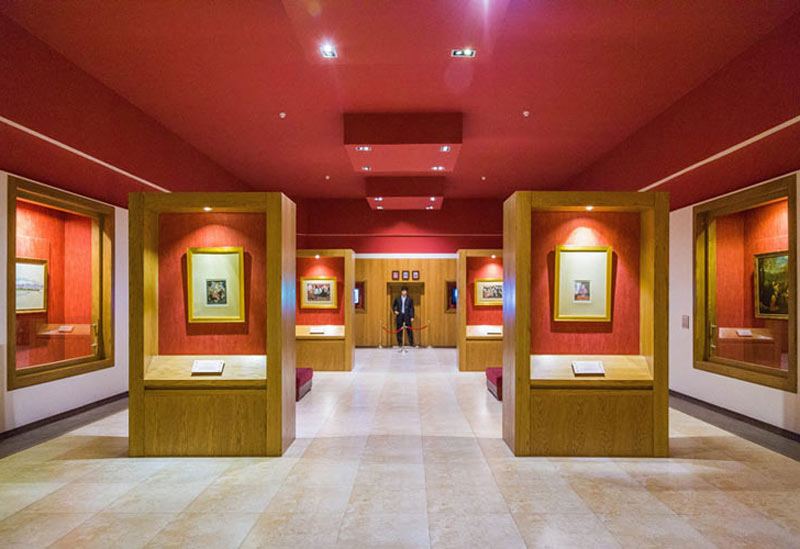
In the Malek museum you can see 7 collections, each of which is unique.
The Malek Museum is 450 meters away from the Imam Khomeini Metro Station.
The theme of the Malek library and museum
The Malek National Library and Museum collections are exclusively dedicated to the following topics:
- Textiles and Fabrics
- Books and Manuscripts
- Islamic Arts
- Historical documents
- Historical Monument
- Art gallery
- Collection
- Historical
- Stamps
- Picture
- Coins
- Art
Visiting Hours: First half of the Year: 9:00 am to 6:00 pm (Thursdays till 3:45 pm)
Second half of the year: 1: 6-1: 5 (Thursdays to 6: 9)
Suggested visiting time: 1 hour
More information about the Malek National Library and Museum
Address: Imam Khomeini Street, Melal Motahed Street (Mashq Square)
Distance from Espinas Gulf Hotel to National Library & Museum: 5.2 km. 13 minutes by car during non-traffic hours
5. National Garden: A gateway to Tehran's past
The National Garden is a structure on Tehran's Imam Khomeini Street that used to be the symbol of the city before the Azadi Tower was built.
It was built during the Qajar era and gradually changed.
The National Garden was originally a gateway to Mashgh Square, which was very important at that time.
A combination of Iranian-European architectural style can be seen in the structure of the National Garden which is known as Reza Khani's style.
Tiles and pergolas have sign of this kind of architecture more than any other places.
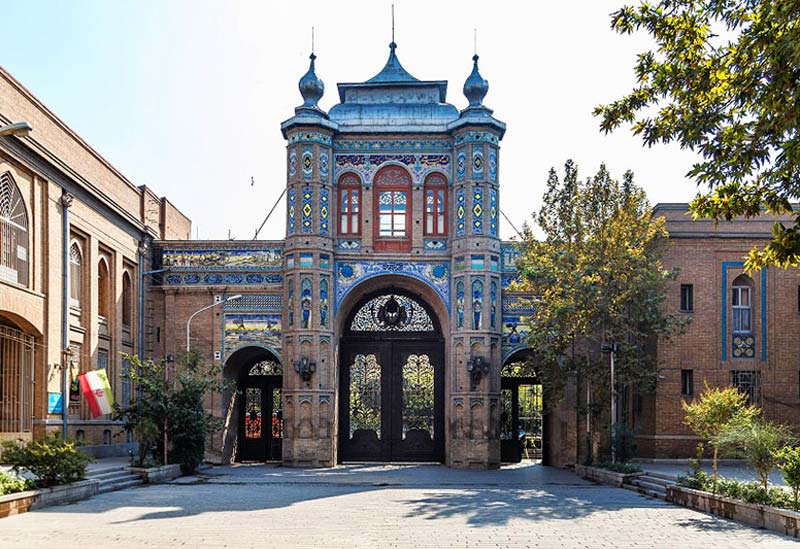
Among the interesting highlights of this monument are engravings of azure, turquoise, yellow, brown, golden, red, white and green designs, and motifs such as leopard, lion and sun, cannon and cannonballs.
And they show the conquest of Tehran. This work is located 300 meters from Imam Khomeini Metro Station.
Interestingly, films whose story took place during Reza Khan's time were built next to this place.
Suggested visiting time: 1 hour
More information about the National Garden
Address: Imam Khomeini Street
Distance from Espinas Persian Gulf Hotel to National Garden: 5.4 km. 11 minutes by car in non-traffic hours
6. National Museum of Iran: A Trip to Ancient Iran
The National Museum of Iran is the first and most important museum in the country, set up in one of the old buildings in the area, taking you on a historic journey.

The building started to be built on Reza Shah's orders on May 11th, 1934 by French architect Andre Godard.
The building was completed in 1937 and people could enter it. The museum is divided into two parts: Ancient Iran and the Islamic period, each with unique artifacts.
One of the most notable works of this museum is the Salt Man; it is actually a miner, preserved as a mummy in the salt mine, and his body remains somewhat intact.
The museum is about 550 meters from Hasanabad Metro Station and Imam Khomeini Metro Station.
Visiting Days: Every day except mourning days including: martyrdom of Prophet Ali (PBUH), death of Prophet Muhammad (PBUH), testimony of Imam Jafar Sadegh (PBUH), Ashura and Tasoua Hosseini
Suggested visiting time: 2 to 5 hours
More information about the National Museum of Iran
Address: 30 Tir Ave.
Distance from Espinas Persian Gulf Hotel to National Museum of Iran: 4.5 km. 12 minutes by car during non-traffic hours
7. 30 Tir Street: The delicious street of Tehran
Hearing the name of old Tehran, many historical attractions and monuments come to mind, but there are other attractions in this part of the city, including 30 Tir Street, a street with numerous cafes and restaurants offering delicious options and interesting atmosphere.

Some cafes are fixed in this delicious street but some of them are not fixed and usually are available at nights.
This historic street of Tehran was paved in the early 2016 and started operating as a street food shortly afterwards.
You can find many options from traditional and fast food to international cuisine and traditional and modern drinks.
The nearest metro station is Hassan Abad, 500 meters away.
Visiting Hours: 24 hour hours
Suggested visiting time: 1 to 2 hours
More information about 30 Tir Street
Address: Imam Khomeini Street - 30 Tir Street
Distance from Espinas Persian Gulf Hotel to 30Tir Street: 4.1 km. 11 minutes by car in non-traffic hours
8. Hassan Abad Square: Tehran European Square
Hassan Abad Square is an attraction at the intersection of Imam Khomeini Street with Hafez Avenue and Vahdat Eslami Street, formerly known as Malek al-Motekalemin Square, Hasht Gonbad Square and 31 Shahrivar Square.
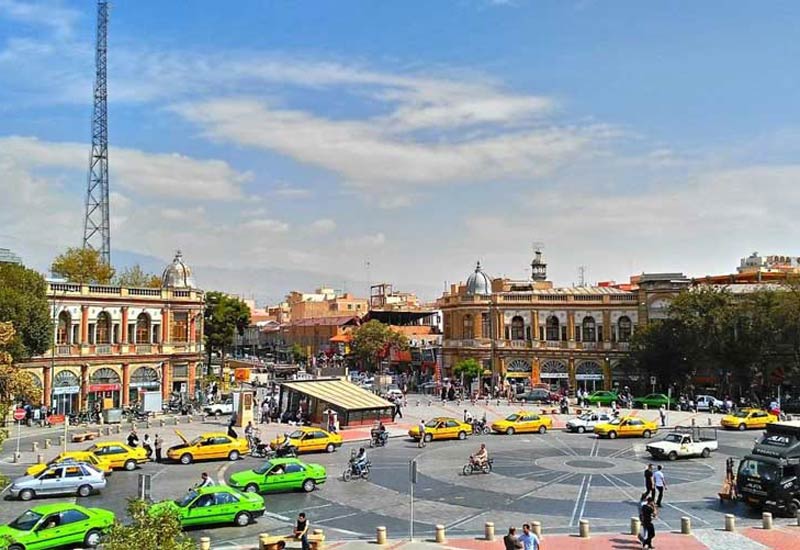
This square is considered the most European square in Tehran because the western architectural style is clearly seen in its dome buildings.
There are 4 buildings around the square, with eight domes over them. The existence of these buildings has given the field a distinctive look and made it one of Tehran's attractions.
The buildings in the field were the work of an Armenian named Ghulich Baghlian, and the prominent Armenian architect Leon Tadosian also worked as a designing engineer.
The circular domes of the square are the work of Ostad Akbar Nekuvaght.
Today, Hassan Abad Square is not only a reminder of the past but also a place for shopping and sightseeing.
This square is one of the shopping malls for yarns and is well known in this area.
Visiting Hours: 24 hours
Suggested visiting time: 1 to 2 hours
More information about Hassan Abad Square
Address: Hassan Abad Square
Distance from Espinas Persian Gulf Hotel to Hassan Abad Square: 4.8 km. 10 minutes by car in non-traffic hours
9. Moghadam House and Museum: A Sweet World
Moghadam House and Museum is a memorial from the late Qajar period and entering it takes you to a new world.
This work was originally a grand and magnificent mansion that housed Mohammed Taqi Khan, a well-known Qajar court official.
The house was later given to Mohsen Moghadam, the son of Ehtesab Al-Molk and a professor of archeology at the University of Tehran, where he and his French wife, Selma, lived.
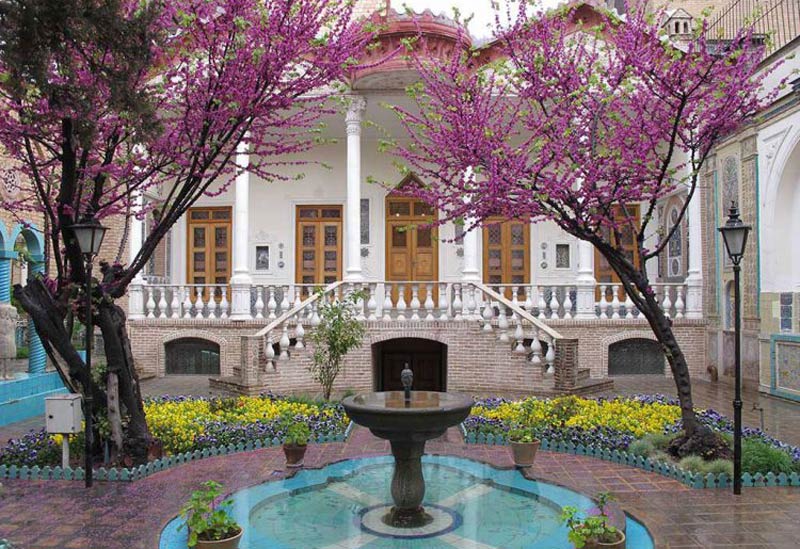
He was an employee of the National Library and Museum of Iran and was keen on valuable artifacts and wanted to take a step towards preserving Iran's cultural and historical heritage.
He incorporated old objects such as tiles and stones into the building and collected textiles, pottery, glass, paintings, coins, stamps and historical documents and more.
Mohsen Moghadam donated this house and its historical objects to the University of Tehran in 1972, and today it has become one of Tehran's most beautiful attractions.
The nearest metro station is Hassan Abad, 500 meters away.
Visiting Hours: 9am to 4pm
Suggested visiting time: 1 to 2 hours
More information about Moghadam house and museum
Address: Imam Khomeini Street
Distance from Espinas Persian Gulf Hotel to Moghadam House and Museum: 4.3 km. 9 minutes by car during non-traffic hours
10. National Museum of the Holy Quran: Specialized Islamic Museums
The National Museum of the Holy Quran contains a collection of Qur'anic, historical and cultural artifacts, and is today the only specialized museum to explore the evolution of literature, illumination and other Quranic arts from the fourth century AH to the late Qajar period.

The interior design of the museum is also interesting in its kind and there is the shape of shamseh in all parts. Shamseh is a sun-like design that is used in gilding or fabric design and has been used as an ornamental mark in Islamic times by muslin artists.
The National Museum of the Holy Qur'an is located in a green area of approximately 10,000 square meters.
There are three sections including the museum, a specialized library and an administrative section.
The museum section has three sections focusing on cultural monuments, contemporary objects and artifacts and permanent and temporary exhibitions.
Visiting Hours: Saturday to Wednesday 09:00 AM to 3:30 PM
Suggested visiting time: 1 hour
More information about the National Quran Museum
Address: The intersection of Valiasr and Imam Khomeini Street
Distance from Espinas Persian Gulf Hotel to the Holy Quran Museum: 4.5 km. 8 minutes by car during non-traffic hours
11. Golestan Palace: Iran's most unique palace
The Golestan Palace that can now be accessed with a ticket in the Tehran bazaar area, has seen many corronation ceremonies.
Ahmad Shah, Mozaffar Al-Din Shah, Reza Shah and Mohammad Reza Pahlavi have put the royal crown on their heads in this palace and now Golestan is open to the public.
Golestan is one of Tehran's favorite places, and unlike museums and palaces that are rarely visited by anyone, visiting it is very enjoyable.
On the first day of April every year, about 12,000 people visit the palace, and the long line in front of it shows that it is very spectacular

One can see the Golestan Palace from the metro station of 15 Khordad or Imam Khomeini and visitors pass through the crowd and old buildings and bunkers and reach the palace.
If you cannot reach the subway, you can take a taxi or bus to Galoobandak intersection and take a few minutes’ walk to the palace.
It is true that the Golestan Palace dates back to Shah Tahmaseb Safavi era, but most of the palaces and mansions inside it were built in the Qajar period and many Qajar elders and later Pahlavi elders went to that palace.
The Golestan Palace of Tehran has seen other events, besides the coronation of kings.
The opening of the First Assembly and the founding of the Constituent Assembly has taken place in this palace.
Why is it called Golestan?
The book "Tehran in the Nasserian Times" states that the complex is named Golestan because of its location in the garden and the existence of long gardens and streets with sycamore trees, but its validity has yet confirmed.
What are the parts of Golestan Palace?
It is not just the palaces and mansions of the complex that are attractive and spectacular.
The courtyard of Golestan palace with towering trees and the pools and tiles of buildings change your mood.
You can shop from the small shop in the corner or have tea in the small café. Here are some sections of Golestan Palace:
Shams Al-Emareh
Before the National Garden was built, Shams Al-Emareh was the capital's symbol. Shams al-Emareh was the tallest building in Tehran at that time.
The building was made of metal and at that time the use of metal in construction was a major development.

Shams Al-Emareh was built by Nasser Al-Din Shah and after his return from abroad, the style of European tall buildings was used in that and a clock given by Queen Victoria to Nasser al-Din Shah was put on its top.
The clock is still there. Mirrors, plastering and paintings of this Palace take the attention of every viewer
Eyvan Takht Mar Mar (marble bed porch)
This porch is the oldest part of Golestan Palace and its construction dates back to Karim Khan Zand period. It was the place of salute rituals.
The salute was a ritual attended by princes and officials held during the Qajar era on various occasions such as Nowruz.

During the ceremony, both the king and the courtiers allowed a group of people to visit them.
Apart from plaster, masonry, carving, mirrors used on the porch, the marble bed made by Fath Ali Shah made this porch even more spectacular.
Large and small pieces of marble are used in this yellow bed.
Khalvat Karimkhani
In the northwest corner of Golestan, Jolo khan or Khalvat Karimkhani can be seen.
Its construction dates back to the Karim Khan period, and it is important to note that Mr. Mohammad Khan orders the transfer of Karim Khan's bones from Shiraz to Tehran.
These bones were buried beneath where Agha Ahmad Khan was passing by, and Agha Ahmad Khan walks on them every day.
In the time of Nasser Al-Din Shah this place was, a place for the king to retreat and smoke shisha until Reza Shah ordered the bones of Karim Khan to be found and moved to a suitable place.
Main Hall
The main hall consists of various sections.
- The Hall of Salam or the Museum where Nasser al-Din Shah spent much of his time putting objects and jewels inside it.
- The Mirror Hall, which was originally a place for displaying the peacock's throne and the Kiani crown and these days is famous for oil paintings of the late Mirza Mohammad Khan Kamal al-Molk Ghaffari.
- The ivory hall and the pottery hall, showcased some of the European kings' gifts to the Qajar kings..
Berelian Hall
In the past, in the current location of the Berelian Hall which is the east of Ivory Hall, there was the Bloor Hall and Berelian Hall was built on the ruins of the previous Hall.
During the reign of Nasser al-Din Shah, this hall was the site of Western kings' gifts, and during Pahlavi's time it became a place to host formal court parties.
Wind Catcher Mansion
On the southwest side of the Golestan Palace we reach the Wind Catcher Mansion.
It is one of the most magnificent palaces of the complex and has many paintings, mirrors, plastering, inlay and marble.
It was built during the time of Fath Ali Shah, but at the time of Nasser A l-Din Shah major changes were made to it.

Salam Hall spring house
The spring house consists of two sections of the gallery and the special museum.
The gallery nowadays is dedicated to the Qajar period paintings and the most exquisite stuff of Qajar kings are displayed in a special museum.
Museum of Anthropology
A plenty of Louis XVI sofas, velvet curtains, two mirrors with frames, bronze sculptures, and some Turkish carpets and clothing from Qajar women and men are among the things that the European Style Museum of Anthropology has.
Diamond Hall
In the southernmost part of the Golestan Palace we reach Diamond Hall which is famous for its numerous mirrors, a feature seen in other parts of the Golestan Palace.
Hours and days of visiting the Golestan Palace
All days of the week except: June 4th, 21st of Ramadan, Tasoa and Ashura Hosseini, 28th os Safar month and 1st and Shawal.
In the first half of the year from 9:00 am to 6:00 pm and in the second half of the year from 9:00 am to 5:00 pm
More information about Golestan Palace
Address: 15 Khordad Ave., Arg Square
Distance from Espinas Persian Gulf Hotel to Golestan Palace: 6.4 km, 13 minutes by car without traffic
If you want to get acquainted with all parts of this palace and its history, you can use the Golestan Palace Tourism Guide on our site.
Conclusion to the Guide to Historic Places Near Espinas Persian Gulf Hotel
This article introduces you to 11 of the most beautiful and fascinating historical sites near the Espinas Persian Gulf Hotel in Tehran. We hope you enjoy visiting these places.
If you are a tourist who has previously visited Tehran and seen these places, share your experience with us and your other friends at the HotelOneClick.
If you are planning to go to Iran for the first time and have questions about these places or other interesting places, please write in the comments. Our consultants will respond to you soon.
